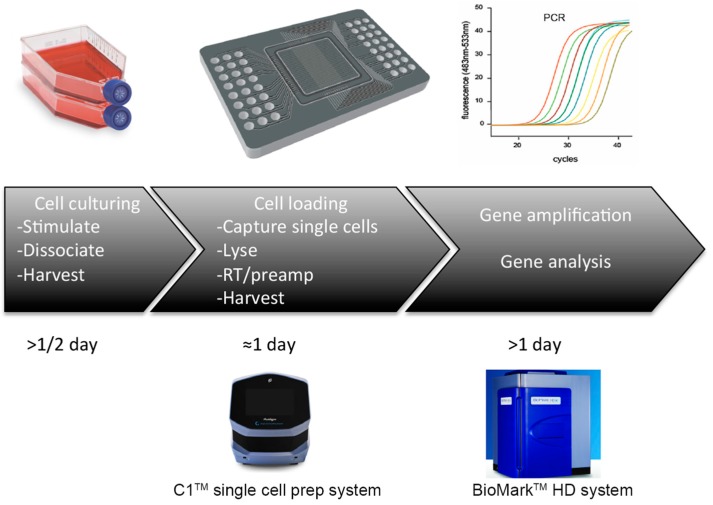Figure 2.
Microfluidics. Lab-on-a-chip technology allows for high-throughput screening in a microenvironment using small volume chambers to conduct different experiments. (Upper) Similar to FACS, the cells need to be dissociated prior to the experiments; (Middle) the cells are typically placed in a chamber and, depending on the technology, the cells may be separated into different chambers containing only one cell; (Lower) the technology currently used by Fluidigm are single-phase microfluidic systems using multilayer soft lithography to make on and off valves to compartmentalize the cells. Another promising technology is the droplet-based microfluidics to handle small volumes of fluids. (Right) following single-cell isolation, lysis and cDNA synthesis the samples are subjected for gene analysis. A typical qPCR profile is shown with different colors representing the amplification curve of target gene(s).

